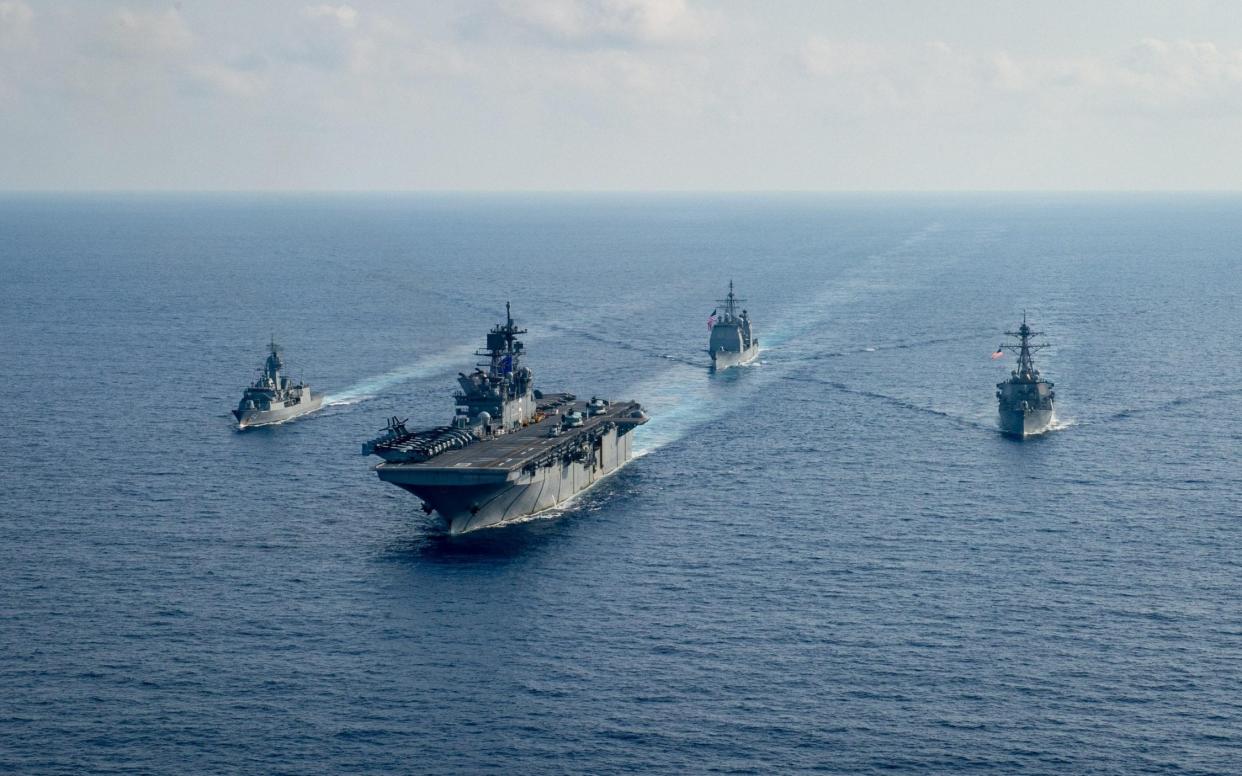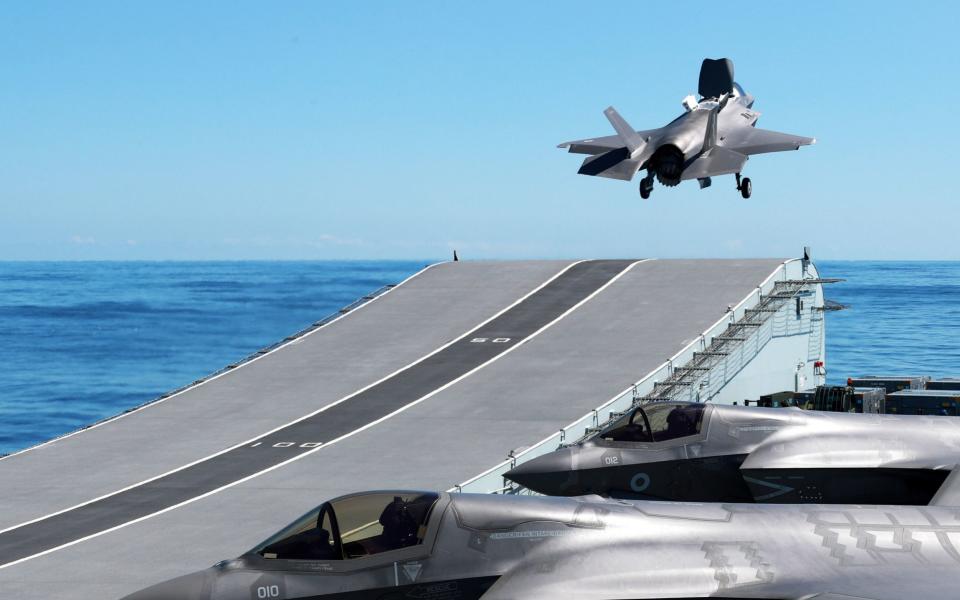France sends navy mission to South China Sea as tensions build in Beijing's back yard

France is navigating its own path as an alternative power to China and the US in the South China Sea as the military build-up continues in the Indo-Pacific, one of the world’s most strategic and volatile regions.
After sending its nuclear attack submarine Émeraude through the South China Sea in early February, Paris is to deploy its amphibious assault ship, the Tonnerre, and the frigate Surcouf to sail twice through waters claimed by Beijing, to assert its own presence in the region.
As part of its annual Jeanne d’Arc mission, it will also take part in large-scale exercises with the navies of Indo-Pacific partner nations - India, Australia, Japan and the United States.
The UK will also conduct joint drills with Japan when it sends its new carrier strike group to the Indo-Pacific later this year, in what has been described by Ben Wallace, the Defence secretary, as the “most significant Royal Navy deployment in a generation.” The UK will team up with US navy for its mission.
This week Berlin also announced that a German frigate will set sail for Asia in August and, on its return journey, become the first German warship to cross the South China Sea since 2002, amid growing tensions with China over navigation rights.

China claims almost all the energy-rich waters of the South China Sea, where it has established military outposts on artificial islands.
Collin Koh, a research fellow at the S. Rajaratnam School of International Studies, described the “absolute intensity of the warship presence planned for this year” as “unprecedented” but said it was more like a set of “national roadshows to showcase their Indo-Pacific commitment” than coordinated.
He said France, in particular, wanted to be seen “as an autonomous power in the Indo-Pacific in its own right and not playing a secondary role to the US.”
He added: “It’s clear that France wants to posit itself as an alternative country to go to besides the US and China, with its own narrative of ‘if you are sick and tired of all the Sino-US rivalry and who to choose between China and the US, there is France’.”
France has a strong historical presence in the region and still has island territories spanning the Indo-Pacific. Emmanuel Macron, the French president, has previously spoken of strengthening a “Paris-Delhi-Canberra axis.”
In reality, however, added Mr Koh, Japan is regarded as having a “much bigger advantage” when it comes to offering a regional alternative to China or the US.
Both China and the US are continuing to beef up their presence in the strategic region, which is a patchwork of major trade routes.
On Monday, China’s state media, Global Times, reported the start of Chinese military exercises in the South China Sea for the whole of March, in response to frequent missions of US reconnaissance aircraft and ships and a French warship group on its way.
In a sign of deepening Sino-US competition, this week, the US Indo-Pacific Command requested around $27 billion from Congress for new precision-strike, air missile defence and other capabilities to counter China’s own military ambitions.

